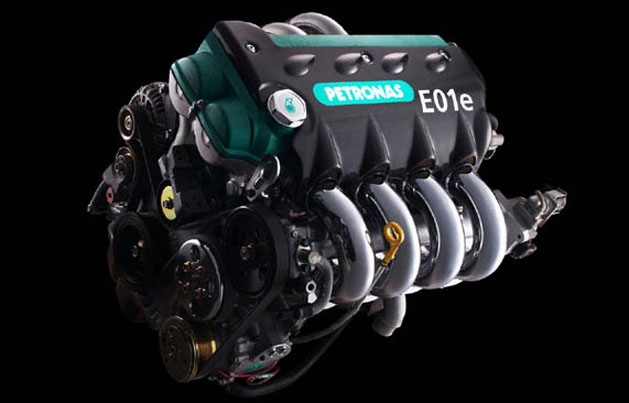A report by Bernama states that Proton has acquired all of Petronas’ engine technologies as well as the associated technology patents at a cost of RM63 million. The deal encompasses seven engine technologies as well as 117 technology patents.
The reports adds that the acquisition gives Proton immediate ownership of a family of normally-aspirated engines and turbocharged 2.0 litre engines, as well as a 2.2 litre turbocharged version to complement its existing Campro engine line-up, according to Proton chairman Datuk Seri Khamil Jamil.
“Proton and Petronas initiated the engine technology exploration in 1996. It is now time to take over from Petronas, since the company decided in 2010 to exit completely from all engine development activities,” he told reporters at the agreement signing.
The only Petronas-developed engine revealed to date is the E01e inline-four, 16-valve DOHC engine with variable valve timing, which is a normally-aspirated unit, so the mention of turbocharging could mean previously unrevealed tech.
Designed to be configurable in three displacements (1.8, 2.0 and 2.2 litres), the E01 first appeared in 1998 in a Proton Waja and a Satria GTI.
The original design target for the unit was 200 PS and 200 Nm of output as well as a 120 kg weight – when delivered, these benchmark numbers were surpassed, the rated output being 204.3 PS at 7,300 rpm and 203 Nm at 5,300 rpm, and the engine tipped the scales at 108.9 kg.
Commercially, the engine never made its way into series production Protons, despite an intention to do so. In 2005, it was reported that Nanjing Automobile would be using the Petronas E01 technology in its vehicle line-up. It was later mentioned that the unit was to be built in China.
AD: Drive the Proton model of your dreams. Submit your details and Proton PJ will get in touch with you.
Looking to sell your car? Sell it with Carro.




















AI-generated Summary ✨
Comments show excitement and optimism about Proton's acquisition of Petronas engine technology, emphasizing the potential for improved performance and future models like the Neo hatchback. Many appreciate that the engine technology is pre-existing and ready, viewing it as a strategic move that may revitalize Proton’s offerings. There's a sense of nostalgia about the history of Proton engines and some skepticism about whether the technology is outdated, but most express hope that Proton will adapt and modernize it. Several comments highlight Proton's past delays and missed opportunities, wishing for better quality, design, and innovation to match global standards. Overall, sentiments are optimistic but mixed with some doubts, focusing mainly on the potential benefits for Proton’s future products.